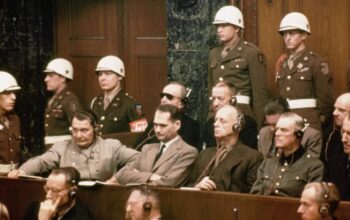Welcome to a look into a fascinating concept that may sound like it’s from a science fiction novel – the Fourth Turning. Don’t let the name intimidate you; it’s a simple but profound idea that sheds light on the cyclical rhythms of history. In this article, we’ll explore the Fourth Turning, what it is, how it works, and its potential impact on our future.
Understanding the Fourth Turning
The Fourth Turning, a theory developed by historians William Strauss and Neil Howe, is a captivating framework that divides history into recurring cycles, each lasting approximately 80–100 years. These cycles consist of four distinct seasons – or turnings – that mirror the seasons of the year. They are as follows:
- The First Turning: High
- The Second Turning: Awakening
- The Third Turning: Unraveling
- The Fourth Turning: Crisis
Picture these turnings as the seasons of a year-long calendar of history. Just as spring, summer, fall, and winter follow one another predictably, so do these turnings. The unique aspect of the Fourth Turning is that it revolves around a generational rhythm, not a strict time frame, as each turning typically spans about 20–25 years.
The First Turning: High
The First Turning, also known as the “High,” is a period of optimism and collective unity. Institutions are strong, and people trust in authority. Society is geared towards community building and personal responsibility. This is a season of growth and prosperity.
The Second Turning: Awakening
As we transition to the Second Turning, the “Awakening,” society undergoes significant changes. Individuals start to question established norms, challenge authority, and seek alternative ways of thinking. This era is marked by cultural and social shifts and the emergence of new ideas.
The Third Turning: Unraveling
The “Unraveling” is the Third Turning, where society becomes more fragmented and individualistic. Trust in institutions erodes, and social cohesion weakens. This period is characterized by a focus on personal freedoms and self-expression, often at the expense of the collective good.
The Fourth Turning: Crisis
Finally, we arrive at the Fourth Turning, the “Crisis.” This is a tumultuous season of profound change and upheaval. Events during this phase can be disruptive and transformative, as the old order crumbles, and a new one is born. It is a time of great challenges and, ultimately, a test of the nation’s character.
The Generational Dynamics
The Fourth Turning theory places a heavy emphasis on the generational dynamics, where four generations play vital roles in shaping these turnings. Let’s break it down:
- The Hero Generation: This is the generation that comes of age during the Crisis. They are the ones tasked with facing the immense challenges and emerging as heroes, forging a new path for society.
- The Artist Generation: The Artist Generation precedes the Crisis, and they typically act as cultural and social architects, laying the groundwork for change.
- The Prophet Generation: The Prophet Generation is born during the Awakening. They are the ones who challenge the status quo and inspire change.
- The Nomad Generation: The Nomads are the generation born during the Unraveling. They often focus on individualism and survival.
Predicting the Future
It’s important to note that the Fourth Turning theory is not meant to be a crystal ball for predicting specific events. Instead, it offers a framework to understand the broader patterns of history. However, it’s essential to recognize that, while the theory is insightful, it cannot account for all the variables that influence our world.
For example, during a Crisis, specific events can be influenced by a wide array of factors, including technology, economic conditions, international relations, and more. This makes it challenging to predict exactly how a Fourth Turning will unfold.
The Recent Fourth Turning
The theory suggests that the most recent Fourth Turning in the United States began around the turn of the 21st century. While it’s a bit too soon to make a comprehensive assessment, we have witnessed several events that may fit the Crisis pattern, such as the 2008 financial crisis, political polarization, and more recently, the global COVID-19 pandemic. These events have undeniably shaken the foundations of our society and institutions.
Crisis and Opportunity
While the idea of a Fourth Turning can sound ominous, it also carries an essential message of hope. Crises, as history has shown, can be catalysts for positive change. In the midst of adversity, societies often come together to address their common challenges, leading to innovation, resilience, and transformation.
Moreover, recognizing the patterns of the Fourth Turning can empower individuals and communities to prepare for the challenges that lie ahead. By understanding the potential outcomes and the generational roles, we can better navigate the difficult times and contribute to shaping a more positive future.
Final Thoughts
The Fourth Turning is a thought-provoking concept that invites us to ponder the cyclical rhythms of history. By understanding the dynamics of these turnings and the roles that generational archetypes play, we can gain valuable insights into our past and present.
It’s important to remember that history doesn’t repeat itself exactly, but it does rhyme. The Fourth Turning theory encourages us to look at our past through a different lens, illuminating the patterns that shape our world. As we continue to navigate the uncertain waters of the 21st century, the Fourth Turning offers a unique perspective on the challenges and opportunities that lie ahead.
In the grand scheme of things, the Fourth Turning is a reminder that we are part of a continuous cycle, each generation contributing to the story of humanity. And in this understanding, we find our place in history and the power to shape our future.



